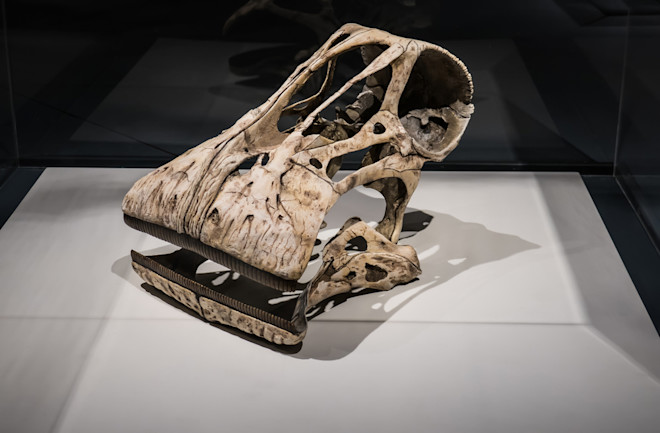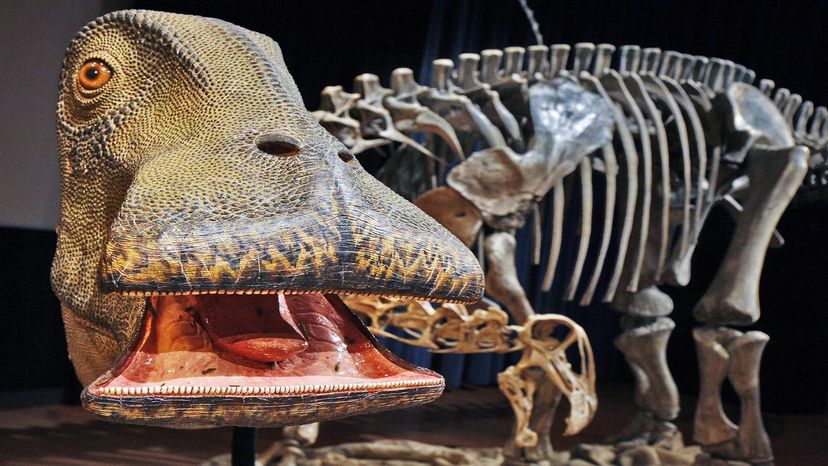The sauropod dinosaur Nigersaurus likely evolved its strangely-shaped head to better mow prehistoric lawns.

In 1997, when paleontologist Paul Sereno first began to unearth the remains of a dinosaur in Niger’s Sahara Desert, he didn’t know what to think. He was excavating bones in a dry region called Gadoufaoua, which had a rich fossil bed first discovered by French uranium miners. There were a lot of light, aerated bones — usually associated with theropods, like Tyrannosaurus rex, and the birds that evolved from them — so the researchers assumed that was what they were dealing with.

As Sereno began to piece together the fossils, he realized it must be a sauropod, or long-necked dinosaur. Most of the bones appeared fairly typical for long-necked dinosaurs —except for its bizarrely-shaped head. Eventually, back in the lab, Sereno had to ask for a second opinion from colleagues who worked on fossil fish and other reptiles before he figured it out.
There are a lot of strange-looking dinosaurs out there. But Nigersaurus taqueti (pronounced NI-juhr-SOR-us) might sit at the top of the list. The sauropod’s jaw looks almost like a large nail clipper, with large rows of hundreds of teeth on its upper and lower jaws. It almost didn’t seem to fit into its skull when Sereno was trying to piece it together.
“It’s something that really takes the cake for amazing cranial adaptations in this group, the long-necked dinosaurs,” says Sereno, a professor of paleontology at the University of Chicago. “It’s just a majestic example of evolution.”

What Did Nigersaurus Look Like?
Sauropod dinosaurs, like Nigersaurus, walked on four legs, with a long “whiplash tail” and a long neck. But compared to other sauropods, it was relatively small — sitting somewhere between an African and Indian elephant in size.

The dinosaur’s vertebrae was filled with air pockets similar to those of birds, so the dinosaur was likely quite light, as well. Its brain was about the size of a walnut, which is more or less average for sauropods, Sereno says.
Its head is what really stands out about Nigersaurus, though. The jaws, which have a flat front, are lined with about 500 teeth, which Sereno says were replaceable. These teeth were all the same in size, and he estimates that they probably only lasted about a month or so before they were worn down.
“This is the first sauropod with a tooth battery,” Sereno says, adding that its jaw would have been angled downwards rather than forwards — which is why Sereno had such trouble fitting the bones together initially.

What Did Nigersaurus Eat?
These teeth and the shape of the sauropod’s skull likely evolved to help it munch on plants low to the ground. Grass wasn’t around yet during its time, but Nigersaurus probably spent much of its time grazing on something like it, wearing down its teeth in no time.
“This is a Mesozoic lawnmower,” Sereno says.
All told, these were some of the most successful herbivores on the planet, Sereno says. Nigersaurus lived about 110 million years ago, during the Mesozoic Era, and the species was around for about 150 million years.

Still, the plant-eating sauropods would likely have provided a great source of food for predators, adds Sereno. This likely included the long-snouted Suchomimus, a large spinosaur found in the same fossil deposits as Nigersaurus.
What’s more, just like grazing cows today, these creatures were abundant during their heyday. After the initial discovery, Sereno found another Nigersaurus specimen during an expedition in 2000.
